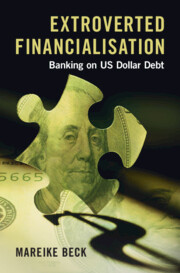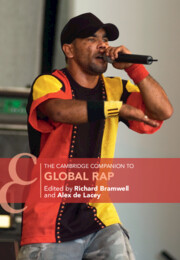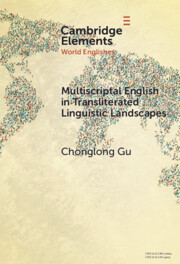Refine search
Actions for selected content:
220 results
2 - Corporations, Human Rights and the Governance Gap
-
- Book:
- Making and Breaking the Rules in Business and Human Rights
- Published online:
- 13 December 2025
- Print publication:
- 22 January 2026, pp 56-85
-
- Chapter
- Export citation
7 - Diasporic State-Building and Its Implications for Understanding World Politics
-
- Book:
- Diasporic State-Building
- Published online:
- 25 November 2025
- Print publication:
- 18 December 2025, pp 207-216
-
- Chapter
- Export citation
8 - The Global State
-
- Book:
- States of Transition
- Published online:
- 31 October 2025
- Print publication:
- 13 November 2025, pp 185-206
-
- Chapter
- Export citation
Voter perceptions and the politics of hidden costs in unilateral sustainable supply chain regulations
-
- Journal:
- European Journal of Political Research ,
- Published online by Cambridge University Press:
- 01 October 2025, pp. 1-16
-
- Article
-
- You have access
- Open access
- HTML
- Export citation
Policy hybrids and bricolage: the life course of individual accounts in China’s health policy domain
-
- Journal:
- Journal of Social Policy , First View
- Published online by Cambridge University Press:
- 23 September 2025, pp. 1-18
-
- Article
- Export citation
Chapter 15 - Interculturalism
- from Part II - Themes and Issues
-
-
- Book:
- The Cambridge Companion to Modernist Theatre
- Published online:
- 28 August 2025
- Print publication:
- 11 September 2025, pp 267-284
-
- Chapter
- Export citation
4 - The Eurodollar Roots of the German Model
-
- Book:
- Extroverted Financialisation
- Published online:
- 07 August 2025
- Print publication:
- 21 August 2025, pp 69-90
-
- Chapter
- Export citation
Chapter 1 - The Politics of Postmodern British Fiction
-
-
- Book:
- The Cambridge Companion to British Postmodern Fiction
- Published online:
- 07 August 2025
- Print publication:
- 21 August 2025, pp 18-32
-
- Chapter
- Export citation

Extroverted Financialisation
- Banking on US Dollar Debt
-
- Published online:
- 07 August 2025
- Print publication:
- 21 August 2025
Catalanising the Costa Brava: Local interests, global tourism, and the nationalist power of authenticity in the late twentieth century
-
- Journal:
- Journal of Global History / Volume 20 / Issue 3 / November 2025
- Published online by Cambridge University Press:
- 06 August 2025, pp. 365-382
-
- Article
-
- You have access
- Open access
- HTML
- Export citation

The Cambridge Companion to Global Rap
-
- Published online:
- 25 July 2025
- Print publication:
- 14 August 2025
1 - Introduction to Volume III
-
-
- Book:
- Core Concepts in Criminal Law and Criminal Justice
- Published online:
- 09 July 2025
- Print publication:
- 24 July 2025, pp 1-10
-
- Chapter
- Export citation
6 - Fat Cats
-
- Book:
- The CEO
- Published online:
- 19 June 2025
- Print publication:
- 19 June 2025, pp 170-215
-
- Chapter
- Export citation
6 - Dehumanising Refugees
- from Part II - Confronting Global Contradictions
-
- Book:
- Global Crisis and Insecurity
- Published online:
- 01 June 2025
- Print publication:
- 12 June 2025, pp 132-153
-
- Chapter
- Export citation
3 - The Existential Unsettling of Security
- from Part II - Confronting Global Contradictions
-
- Book:
- Global Crisis and Insecurity
- Published online:
- 01 June 2025
- Print publication:
- 12 June 2025, pp 61-85
-
- Chapter
- Export citation
12 - Moving towards a Manifesto
- from Part III - Struggling for Positive Human Development
-
- Book:
- Global Crisis and Insecurity
- Published online:
- 01 June 2025
- Print publication:
- 12 June 2025, pp 279-308
-
- Chapter
- Export citation
5 - Disrupting the Hopes of Reconciliation
- from Part II - Confronting Global Contradictions
-
- Book:
- Global Crisis and Insecurity
- Published online:
- 01 June 2025
- Print publication:
- 12 June 2025, pp 114-131
-
- Chapter
- Export citation
2 - Redefining Basic Concepts
- from Part I - The Dark Energy of Our Time
-
- Book:
- Global Crisis and Insecurity
- Published online:
- 01 June 2025
- Print publication:
- 12 June 2025, pp 33-58
-
- Chapter
- Export citation
The still incomplete pursuit of universal access to medicines
-
- Journal:
- Health Economics, Policy and Law / Volume 20 / Issue 3 / July 2025
- Published online by Cambridge University Press:
- 22 May 2025, pp. 284-296
-
- Article
-
- You have access
- Open access
- HTML
- Export citation

Multiscriptal English in Transliterated Linguistic Landscapes
-
- Published online:
- 07 February 2025
- Print publication:
- 13 February 2025
-
- Element
- Export citation
